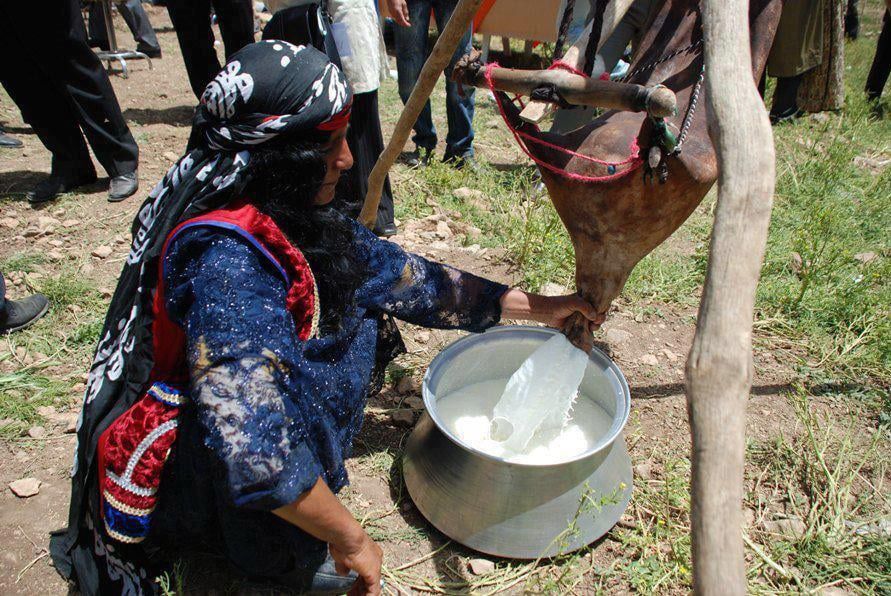In the rural landscapes of Kurdistan, a centuries-old craft continues to play a vital role in daily life. The Meshka, a traditional vessel used for churning yogurt into butter and cheese, is a testament to the skill and dedication of Kurdish women. Its creation is a meticulous process, requiring patience and expertise that have been passed down through generations, preserving both cultural heritage and practical tradition.
The process begins with the careful removal of a sheep’s skin, ensuring that no meat remains. Once separated, the hide undergoes a rigorous treatment to prepare it for use. It is placed in a large pot where salt and water are boiled together, softening the skin while also strengthening it against cracks and wear. The salt not only preserves the material but also lends it a distinct brownish hue.
To shape the Meshka, it is tightly packed with soft soil and left for several days until it hardens and takes its final form. Once the soil is emptied, the next crucial stage begins. The Meshka is suspended from a wooden beam in a special room where a continuous smoky fire burns below. As the thick smoke rises, it blackens and toughens the skin in a process known as “Qang dan,” a vital step in ensuring the vessel’s durability.
After days of smoke treatment, the Meshka is soaked in water to regain flexibility before it is finally ready for use. It is commonly employed to churn yogurt or store dairy products such as milk and cheese. Along its seams, small holes are reinforced with goat skin, allowing for better water retention and longevity.
Despite the modernization of dairy production, the Meshka remains a symbol of tradition and craftsmanship, a testament to the resourcefulness of Kurdish women who have preserved this practice for centuries. In many villages, its rhythmic motion as it swings back and forth, churning yogurt into butter, is not just a daily ritual but a connection to history—one that continues to endure in the face of time.

